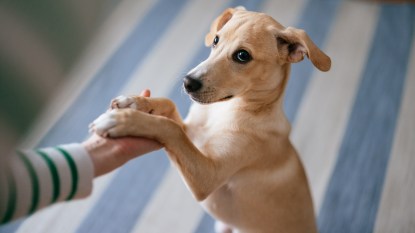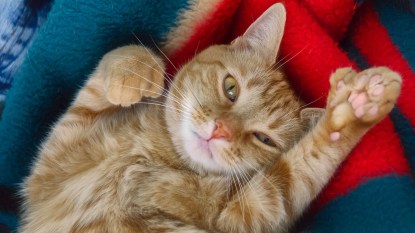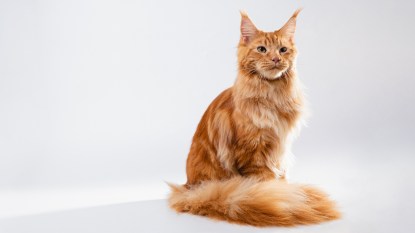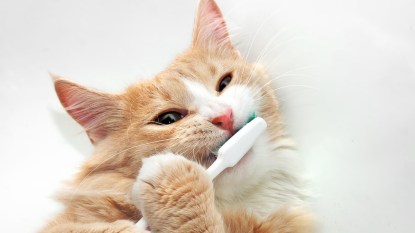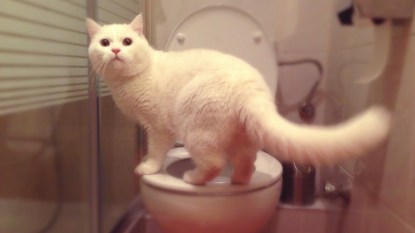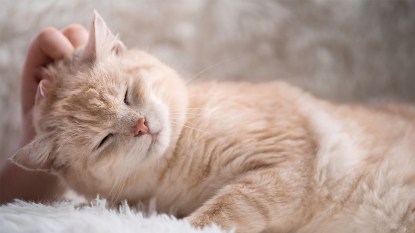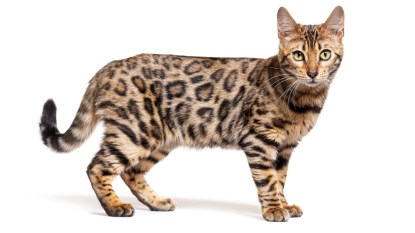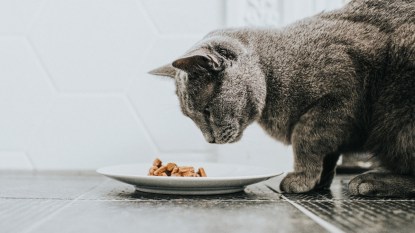Why Do Cats Drool? Vet Explains the Reason + When You Should Be Concerned
Cat drooling is more common than you might think!
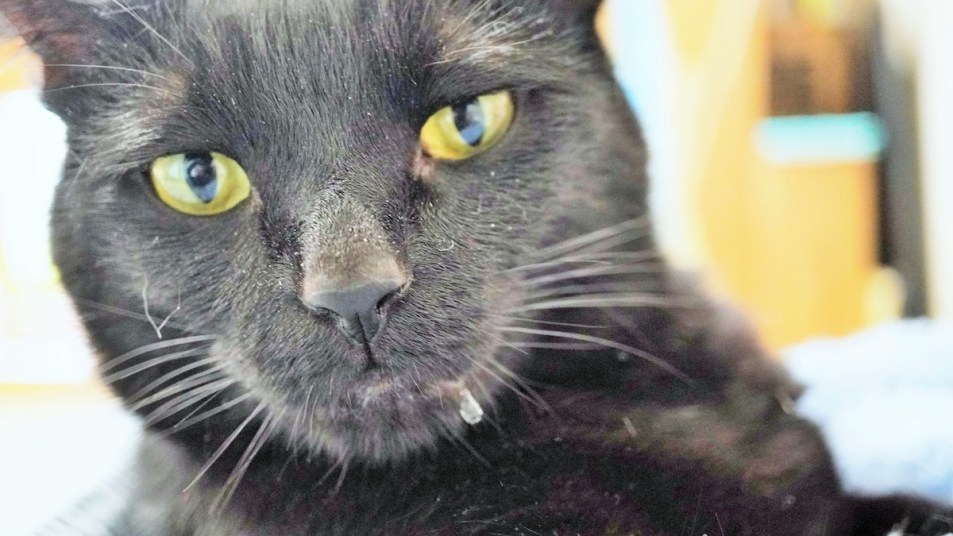
Have you ever curled up on the couch with your kitty and started petting their sweet little face only to discover a glob of drool? While drooling is most commonly associated with dogs, cats can do it too. If you’ve ever witnessed this strange behavior, you’ve probably wondered, Why do cats drool? We got a vet to explain what it means when your weird little guy starts to let the saliva flow.
Why do cats drool?
“Cats can drool for lots of reasons,” says Dr. Grant Little, a veterinarian and expert for JustAnswer. Often, drooling can be linked to a cat’s emotions. “The most likely scenario is just anxiousness or excitement,” he says. “We see a lot of cats work themselves up or get scared in some way that causes them to drool.” On the flip side, you may also see your cat drooling while purring, sleeping or biscuit-making due to their contentment and relaxation.
Related: Why Cats Make Biscuits — Vets Reveal the Cute Reasons Behind Their Need to Knead
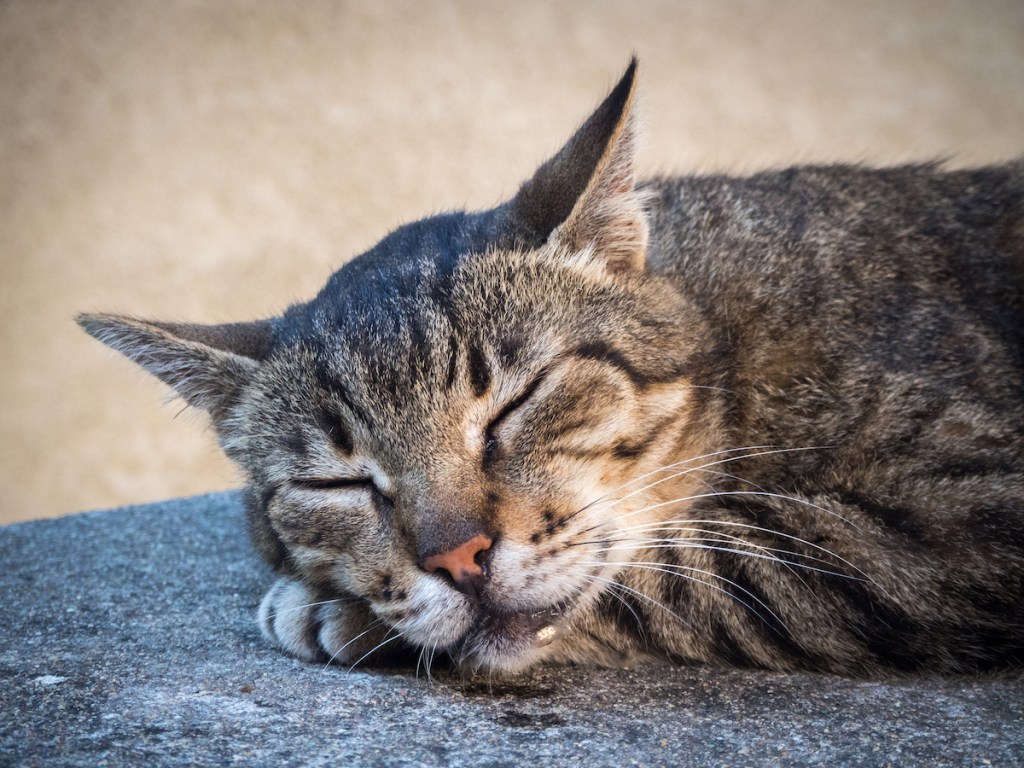
Cats may also drool when they taste something they don’t like. “Bitter medication, a bad-tasting food, or a smell or flavor that assaults a cat’s tastebuds are all common non-medical causes for salivation,” notes Dr. Little. If you switch your cat to a new food and they suddenly start drooling, you may want to reconsider it.
Is drooling in cats common?
Drooling in cats is more common than you might think. “It’s seen in most cats, but it’s not a day-to-day thing you see like in dogs,” says Dr. Little. When it comes to cats, “drooling really just happens under certain circumstances and then stops,” while dogs drool much more regularly.
When to be concerned about cat drool
Because salivating is fairly common and often due to your fuzzy friend’s feelings at any given time, you typically don’t need to be concerned about it. “There are a lot of reasons why a cat may drool and noticing any other symptoms that may be leading to it is important,” says Dr. Little.
Related: Cat Eye Boogers: Vet Explains What They Are and How to Get Rid of Them
Sometimes a cat may drool due to pain, nausea or disease, so if you’re seeing the drooling in conjunction with other symptoms or the drooling seems to be happening much more than usual, it may be time for a vet visit. Dr. Little notes that you should be especially aware of your cat’s salivation if you know they already have chronic health issues such as kidney disease, liver disease, dental disease or inflammatory intestinal disease.
How to get a cat to stop drooling
Let’s face it: While cat drool can be cute at times (especially when they seem happy and chill!), it can also be a bit gross. If you’ve been wondering why your cat drools, you also may be curious as to how to make the salivating stop. It’s usually easy enough to remove bad tastes or smells, if those are what’s causing the drool, but Dr. Little says that while there are prescription medications that can stop drooling, “there’s nothing over-the-counter that I would recommend.”
Related: Why Doesn’t My Cat Purr? Feline Pro on Whether You Should Be Concerned
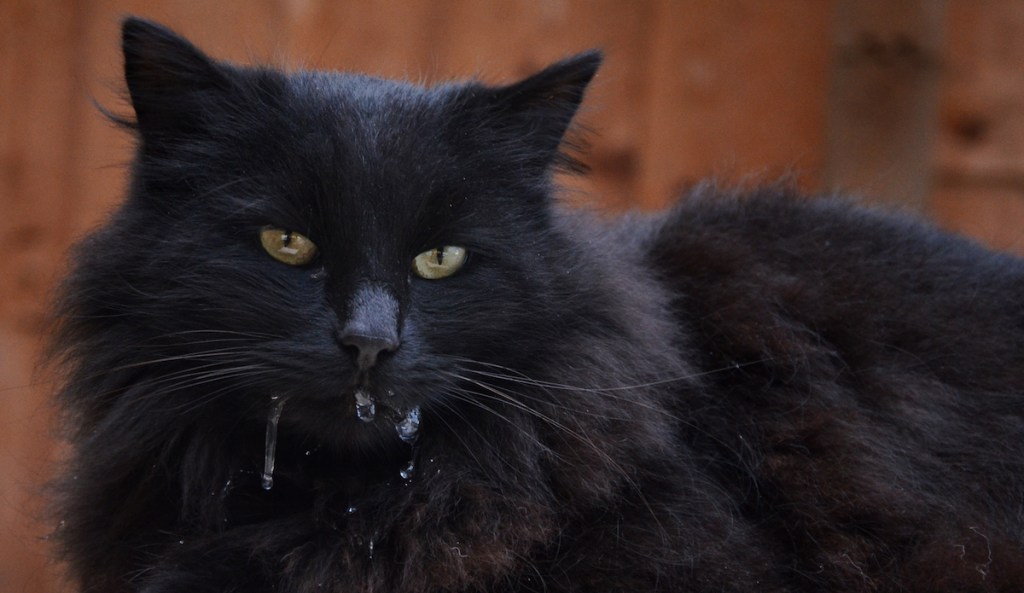
In general, a little dribble is nothing to worry about. As with most quirky cat behaviors, you typically only need to be concerned if your cat is drooling in conjunction with other symptoms. So next time your cat starts to salivate, pay attention to the context: They could just be showing that they’re excited or content!
Read on for more about quirky cat behaviors!
Why Does My Cat Follow Me Everywhere? A Pet Pro Explains the Adorable Reasons
Cat Twitching in Sleep: Vets Reveal What Those Cute Kitty Movements Mean
Why Do Cats Headbutt — Vets Reveal 4 Things They May Be Trying to Tell You


